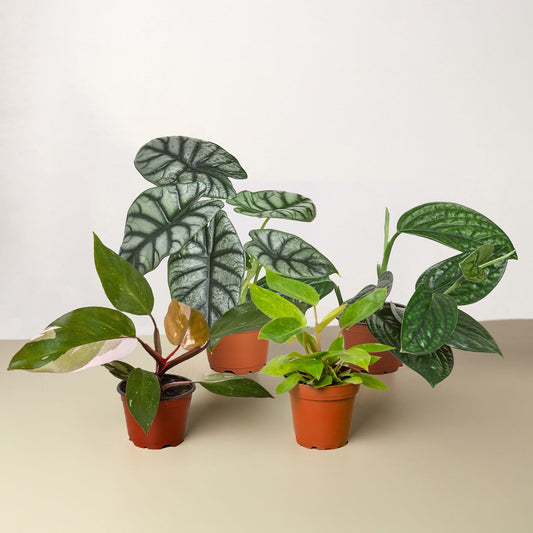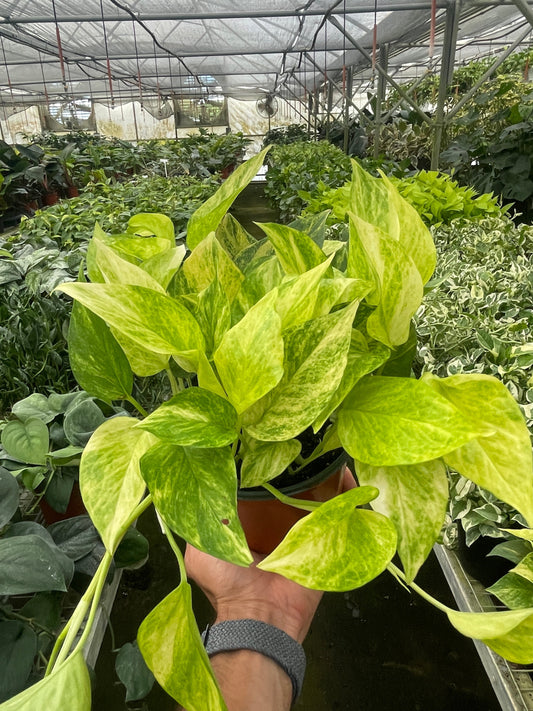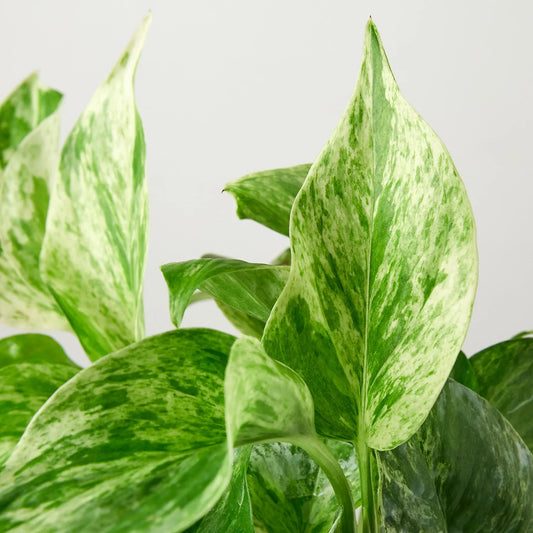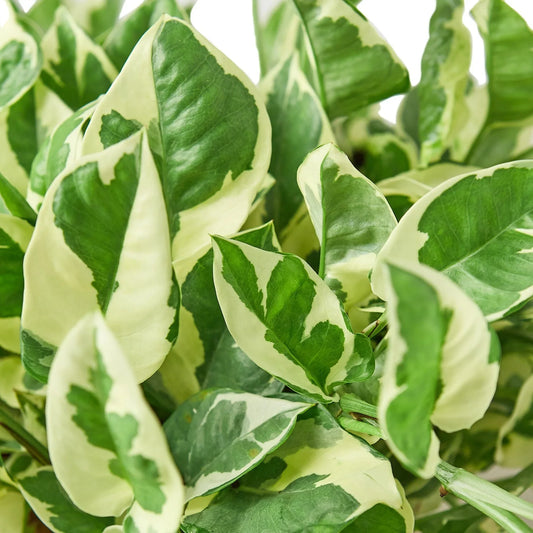Common Pygmy Date Palm Pests (And What To Do About Them)
Cafe Planta Team
Having a pygmy date palm (Phoenix roebelenii) in your home can add a tropical touch that’s hard to beat. These palms are not only charming but also relatively easy to care for. However, like any plant, they aren't immune to pests. Dealing with pests can feel like a major downside to plant ownership, but understanding common issues and how to tackle them can keep your palm thriving.
In this article, we'll explore the most common pests that might bother your pygmy date palm and offer practical tips on how to manage these unwelcome guests. From identifying the culprits to offering actionable solutions, we’ll guide you through keeping your palm healthy and beautiful.
Spider Mites: The Tiny Yet Mighty Nuisance
Spider mites are tiny arachnids that can do a lot of damage if left unchecked. They thrive in warm, dry environments, which makes indoor palms a perfect target. You might notice small, discolored spots on your palm's leaves, or even a delicate webbing if the infestation is severe.
To tackle spider mites, you can start by increasing the humidity around your plant. Spider mites despise moisture, so a regular misting or a nearby humidifier can make a big difference. If the infestation is more serious, consider using insecticidal soap or neem oil. Here’s a step-by-step approach:
- Isolation: First, isolate your infected palm to prevent the mites from spreading to other plants.
- Wash the Leaves: Use a gentle spray of water to wash off as many mites as possible. This could be done in the shower or with a hose outdoors.
- Apply Treatment: Spray the leaves with insecticidal soap or neem oil, covering both the top and underside of leaves. Follow the product instructions for frequency and concentration.
Checking your plant regularly will help catch these pests early. Remember, prevention is always better than cure!
Scale Insects: The Sneaky Sap Suckers
Scale insects are another common pest for pygmy date palms. These pests attach themselves to the leaves and stems, looking like small, brown or gray bumps. They suck the sap from the plant, leading to weakened growth and potential leaf drop.
Getting rid of scale can be a bit challenging due to their protective shells, but persistence pays off. Here’s what you can do:
- Manual Removal: Use a soft toothbrush or a cotton swab dipped in rubbing alcohol to gently remove the scales from the plant.
- Oil Spray: Use horticultural oil to suffocate the scales. Apply it thoroughly to ensure it contacts all parts of the plant where scales are present.
- Repeat Treatments: Due to their lifecycle, you may need to repeat treatments every few weeks to eliminate any newly hatched insects.
Regular monitoring and cleaning can prevent the scale from becoming a recurring issue. Patience and consistency are your best friends in this battle.
Mealybugs: The Cottony Menace
Mealybugs are easy to spot due to their white, cotton-like appearance. They often gather in clusters on leaves and stems, sucking the sap and excreting a sticky substance known as honeydew. This can lead to sooty mold, which further harms the plant.
To manage mealybugs on your pygmy date palm, try these steps:
- Physical Removal: Use a cotton swab dipped in alcohol to remove mealybugs manually. This is effective for small infestations.
- Insecticidal Soap or Neem Oil: Like with spider mites, these treatments can be effective against mealybugs. Ensure thorough coverage of affected areas.
- Increase Air Circulation: Mealybugs thrive in stagnant air, so improving air circulation around your palm can help deter them.
Keep an eye out for these pests, especially in the nooks and crannies of your plant, where they like to hide.
Aphids: The Tiny Green Invaders
Aphids are small insects that come in various colors, including green, black, and brown. They feed on the sap of your palm, causing curling or yellowing of leaves. Like mealybugs, they produce honeydew, which can lead to sooty mold.
To address aphid infestations, consider the following actions:
- Water Spray: A strong spray of water can dislodge aphids from your plant. This method is safe and chemical-free.
- Insecticidal Soap or Neem Oil: These are effective options for more persistent aphid problems. Spray your plant thoroughly, ensuring you reach under the leaves.
- Introduce Beneficial Insects: Ladybugs and lacewings are natural predators of aphids and can help control their population.
A regular check-up, especially during the growing season, will help keep aphids at bay and your palm in good health.
Thrips: The Slender Sap Sippers
Thrips are tiny, slender insects that can cause significant damage by sucking the sap from your palm's leaves. They can lead to deformed or discolored foliage, making your palm look less vibrant.
To manage thrips, try the following methods:
- Blue Sticky Traps: Thrips are attracted to blue, so placing sticky traps around your plant can catch and reduce their numbers.
- Neem Oil or Insecticidal Soap: These treatments can help control thrips. Apply thoroughly to affected areas.
- Regular Monitoring: Keep an eye out for signs of thrips, especially during spring and summer when they're most active.
Thrips can be tough to spot due to their size, so regular examination of your plant is key to early detection.
Fungus Gnats: The Annoying Flyers
Fungus gnats are small flies that are more of a nuisance than a direct threat to your palm. However, their larvae can damage roots if the infestation is severe. They thrive in moist soil, making overwatered plants particularly vulnerable.
To reduce fungus gnat problems, consider these strategies:
- Dry Out the Soil: Allowing the top layer of soil to dry out between waterings can disrupt the gnat lifecycle.
- Sticky Traps: Yellow sticky traps can capture adult gnats, preventing them from laying more eggs.
- Beneficial Nematodes: These microscopic organisms can be added to the soil to target gnat larvae.
Managing your watering routine is the most effective way to prevent fungus gnats from becoming a persistent problem.
Whiteflies: The Floating Trouble
Whiteflies are small, moth-like insects that feed on the sap of your palm. They can cause leaves to yellow and drop prematurely. Like several other pests, they produce honeydew, which can lead to secondary issues like sooty mold.
To combat whiteflies, you can use these methods:
- Vacuuming: Use a handheld vacuum to remove adult whiteflies from your plant. This is a quick and effective method for reducing their numbers.
- Insecticidal Soap or Neem Oil: These treatments can be effective against whiteflies, especially when applied consistently over a few weeks.
- Reflective Mulch: Placing reflective material around the base of your plant can deter whiteflies, as they find it disorienting.
Keeping a regular watch on your plant and maintaining consistent care can help prevent whiteflies from taking hold.
Prevention is Better Than Cure
While dealing with pests can be frustrating, prevention goes a long way in keeping your pygmy date palm healthy. Here are some general tips to help minimize pest problems:
- Regular Inspection: Check your plants regularly for signs of pests. Early detection is crucial for effective management.
- Proper Watering: Avoid overwatering, as many pests thrive in moist conditions. Allow the soil to dry out between waterings.
- Clean Environment: Keep your plant's environment clean. Remove any fallen leaves or debris that could harbor pests.
- Healthy Plants: A healthy plant is more resilient to pests. Ensure your palm is getting enough light, water, and nutrients.
Implementing these preventive measures can save you a lot of trouble in the long run.
Final Thoughts
Tackling pests on your pygmy date palm might seem daunting at first, but with the right knowledge and tools, you can effectively manage and even prevent infestations. From spider mites to whiteflies, each pest requires a specific strategy, and understanding these can help keep your palm looking its best.
At Cafe Planta, we’re here to make your plant journey as smooth as possible. If you have questions or need advice, don’t hesitate to reach out via email or Instagram. Whether you’re looking for new plant friends or tips to care for your current ones, we’re excited to help you create a thriving indoor garden.



















